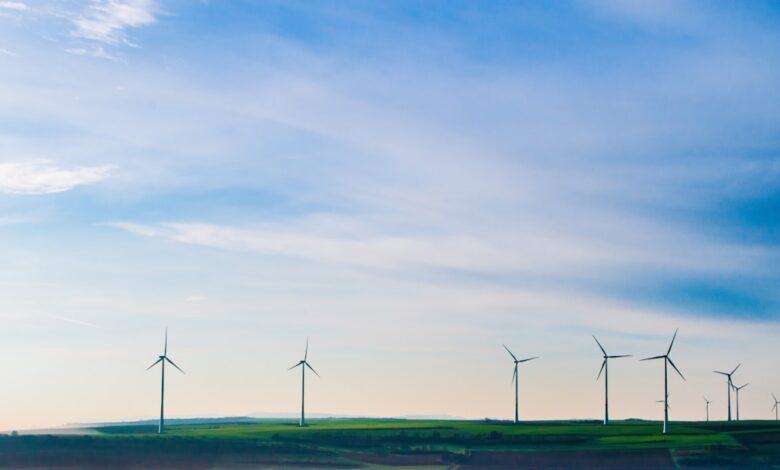Empowering Tomorrow: The Role of Nuclear Energy in a Low-Carbon Future

As the world grapples with the urgent need to address climate change and reduce greenhouse gas emissions, nuclear energy has reemerged as a pivotal player in the transition to a low-carbon future. With the capacity to produce large amounts of electricity without the carbon footprint associated with fossil fuels, nuclear power stands at the intersection of energy security and environmental sustainability. However, the journey toward a nuclear-powered future is not without challenges. This article explores the multifaceted role of nuclear energy in our quest for a cleaner energy landscape. We will delve into the significance of nuclear power as a cornerstone of low-carbon energy strategies, examine the groundbreaking innovations in nuclear technology that promise to enhance safety and efficiency, and address the critical issues of public perception and policy that could shape the trajectory of nuclear energy in the coming decades. As we navigate this complex terrain, understanding the future of nuclear energy is paramount to achieving our global climate goals and ensuring a sustainable energy supply for generations to come.
- 1. "Nuclear Power: A Cornerstone of Low-Carbon Energy Strategies"
- 2. "Innovations in Nuclear Technology: Advancements for a Sustainable Future"
- 3. "Public Perception and Policy: Navigating the Challenges Ahead for Nuclear Energy"
1. "Nuclear Power: A Cornerstone of Low-Carbon Energy Strategies"
As the world grapples with the urgent need to reduce greenhouse gas emissions and combat climate change, nuclear power emerges as a critical component of low-carbon energy strategies. With its ability to generate large amounts of electricity while producing minimal carbon emissions, nuclear energy offers a reliable and efficient alternative to fossil fuels. Unlike renewable sources such as solar and wind, which are intermittent and dependent on weather conditions, nuclear power provides a stable base-load energy supply that can operate continuously, ensuring a consistent flow of electricity to meet demand.
The potential for nuclear energy to contribute to a low-carbon future is underscored by advancements in technology and safety. Next-generation reactors, including small modular reactors (SMRs) and advanced generation IV designs, promise to enhance safety, reduce waste, and improve efficiency. These innovations could help to address public concerns about nuclear safety and the long-term management of nuclear waste, making it a more attractive option for policymakers and investors alike.
Moreover, nuclear power can play a pivotal role in the decarbonization of various sectors beyond electricity generation. Its ability to provide high-temperature heat makes it suitable for industrial processes, such as hydrogen production, which is gaining traction as a clean fuel alternative. By integrating nuclear energy into a broader energy system that includes renewables and energy storage, nations can create a robust and resilient grid capable of meeting future energy demands while minimizing carbon footprints.
In the context of global energy transitions, countries that embrace nuclear power stand to benefit from energy security and reduced dependence on imported fossil fuels. As governments seek to meet international climate commitments, nuclear energy represents a viable pathway to achieving significant emissions reductions while supporting economic growth and job creation in the clean energy sector.
In conclusion, as the world moves toward a low-carbon future, nuclear power stands out as a cornerstone of comprehensive energy strategies. Its capacity for reliable, large-scale electricity generation, coupled with ongoing technological advancements, positions it as an essential player in the global effort to combat climate change and build a sustainable energy landscape.
2. "Innovations in Nuclear Technology: Advancements for a Sustainable Future"
The future of nuclear energy is being shaped by a wave of innovations that promise to enhance its safety, efficiency, and environmental sustainability. As the world increasingly pivots toward low-carbon energy solutions, advancements in nuclear technology are emerging as critical components in the quest for a cleaner energy landscape.
One of the most exciting developments in the nuclear sector is the advent of small modular reactors (SMRs). These compact designs are not only more flexible in terms of deployment but also incorporate advanced safety features that address many of the concerns surrounding traditional large-scale nuclear plants. SMRs can be constructed in factories and transported to their sites, significantly reducing construction times and costs. Their smaller size also allows them to be integrated into a variety of energy systems, including remote locations and smaller grids, thus expanding nuclear's reach in energy generation.
Another promising innovation is the development of Generation IV reactors, which focus on sustainability by utilizing advanced fuel cycles and improving waste management. These reactors aim to utilize fuels more efficiently, potentially recycling spent fuel and reducing long-lived radioactive waste. Technologies like molten salt reactors and sodium-cooled fast reactors are being explored for their ability to operate at higher temperatures, enhancing thermal efficiency and making them suitable for hydrogen production and other industrial applications.
In addition to reactor design, advancements in digital technology and artificial intelligence are transforming how nuclear plants are operated and maintained. Predictive analytics can optimize performance and preemptively address maintenance issues, while remote monitoring and automation can enhance safety protocols and reduce human error. These innovations not only improve the overall reliability of nuclear power but also make it a more attractive option in an energy portfolio increasingly focused on resilience and adaptability.
Moreover, research into fusion energy, while still in the experimental phase, holds the potential to revolutionize the nuclear landscape altogether. If successfully harnessed, fusion could provide a near-limitless source of energy with minimal environmental impact, generating power without the long-lived radioactive waste associated with fission reactors. Projects like ITER are pushing the boundaries of what’s possible, and while commercial viability may still be years away, the continued investment in fusion research signals a growing commitment to nuclear solutions in a low-carbon future.
As countries around the globe seek to achieve their climate goals, the nuclear sector is poised to play a crucial role. The innovations in nuclear technology not only promise to enhance the safety and efficiency of existing systems but also pave the way for entirely new methods of energy generation that align with the principles of sustainability. The integration of these advancements could position nuclear energy as a cornerstone of the low-carbon economy, contributing significantly to the reduction of greenhouse gas emissions and the transition to a more sustainable energy future.
3. "Public Perception and Policy: Navigating the Challenges Ahead for Nuclear Energy"
Public perception and policy play crucial roles in shaping the future of nuclear energy as the world transitions to a low-carbon economy. Despite its potential as a low-emission power source, nuclear energy has faced significant challenges stemming from historical accidents, concerns about safety, and the long-term management of radioactive waste. These factors have contributed to a polarized public opinion, where fear and skepticism often overshadow the scientific assessments of nuclear technology's risks and benefits.
To navigate these challenges, it is essential to engage in transparent communication that demystifies nuclear energy. Educating the public about the advancements in nuclear technology, such as small modular reactors (SMRs) and next-generation reactors that prioritize safety and efficiency, can help alleviate fears. Public forums, community outreach, and inclusive dialogue can foster trust and encourage informed discussions about the role of nuclear energy in achieving climate goals.
Policy frameworks must also evolve to support the integration of nuclear power into the energy mix. Governments need to create robust regulatory environments that not only ensure safety but also incentivize innovation and investment in nuclear technology. This includes streamlining the licensing process for new reactors and providing financial support for research and development.
Furthermore, policies should address the social aspects of nuclear energy deployment, including job creation, community benefits, and environmental justice. Engaging local communities in decision-making processes can lead to more equitable outcomes and enhance public acceptance. As nations strive for ambitious climate targets, it is imperative that policymakers recognize the importance of nuclear energy as a viable component of a diversified low-carbon energy portfolio.
Ultimately, the future of nuclear energy hinges on the convergence of public perception and policy. By fostering a culture of openness and responsiveness, stakeholders can work together to overcome the challenges ahead, ensuring that nuclear energy plays a pivotal role in the global transition to a sustainable and low-carbon future.
In conclusion, the future of nuclear energy in a low-carbon world presents both significant opportunities and formidable challenges. As we strive to meet ambitious climate goals, nuclear power stands out as a crucial element in reducing greenhouse gas emissions and ensuring energy security. The advancements in nuclear technology, from small modular reactors to next-generation safety protocols, promise to enhance efficiency and sustainability, making nuclear a more viable option for the future. However, overcoming public perception hurdles and navigating the complex policy landscape will be essential for unlocking the full potential of nuclear energy. It is imperative that stakeholders engage in transparent dialogue, address safety concerns, and highlight the benefits of nuclear power as part of an integrated and diversified energy portfolio. By fostering innovation and collaboration, we can harness the power of nuclear energy as a reliable partner in our transition to a low-carbon future, paving the way for a more sustainable and resilient energy landscape for generations to come.





